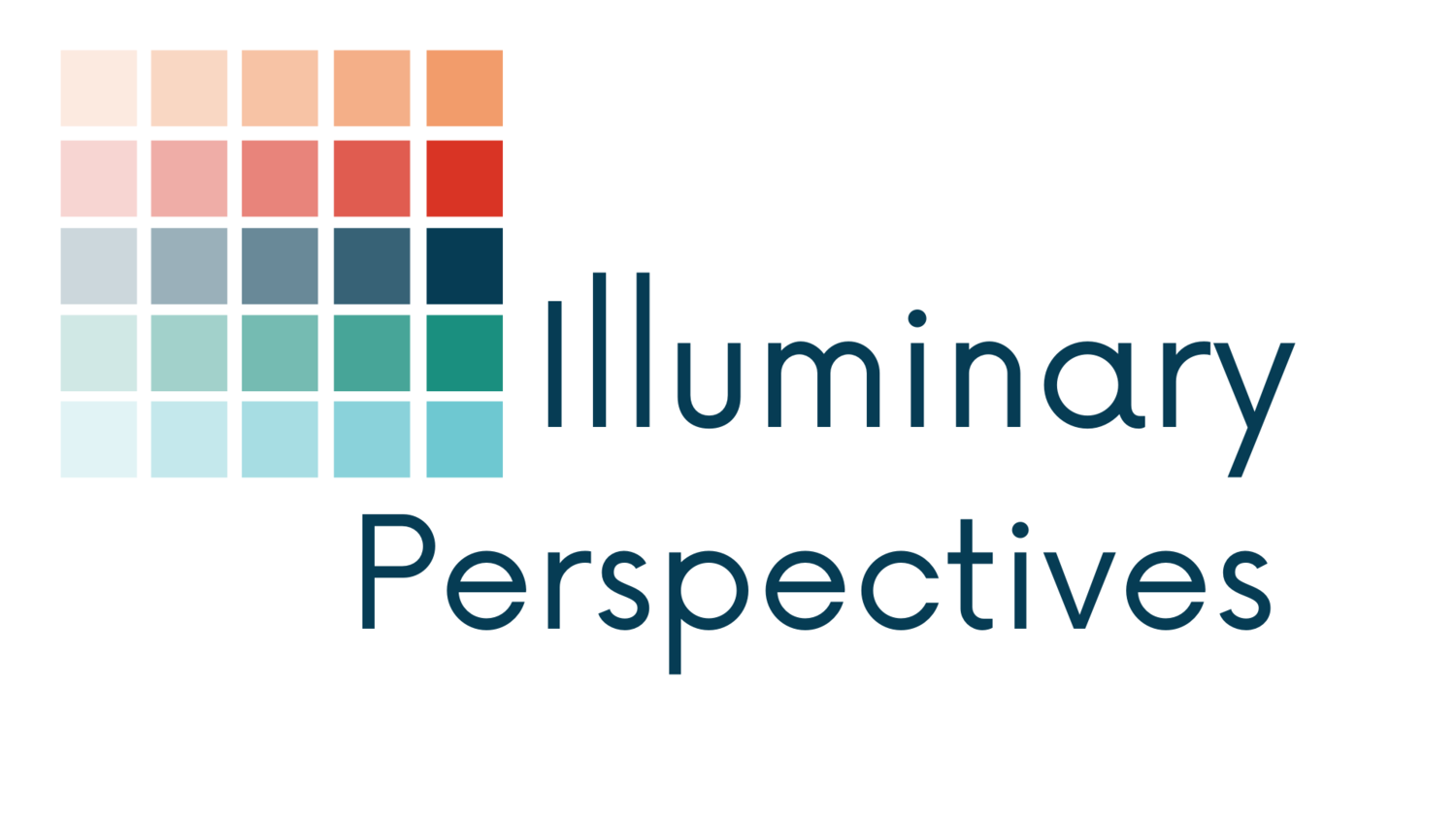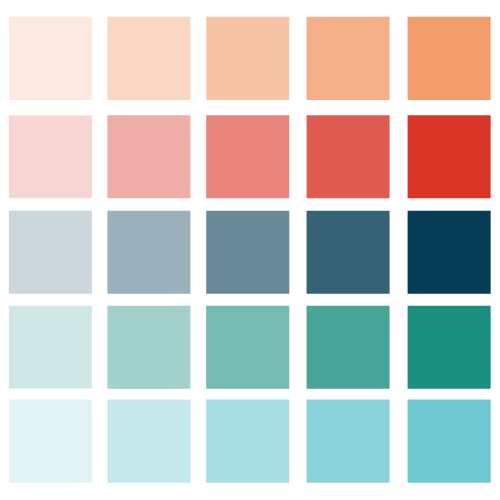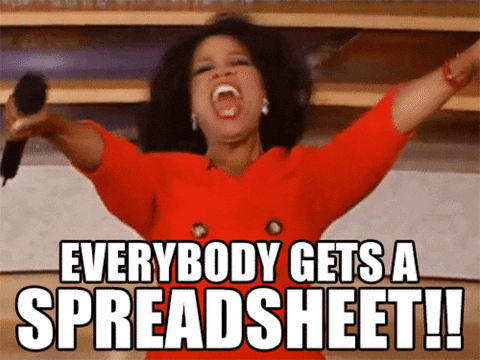Intentional evidence is all around
This is the third part in a series on purposeful learning. Part one is on what purposeful learning is and part two is on asking meaningful questions. In this post, we will explore what intentional evidence is and how to gather it.
Purposeful learning helps us find a deeper understanding of our work, our communities, and our impact to direct us closer to the world we want to see. Purposeful learning is a four step, cyclical process that starts with asking meaningful questions.
Once we have asked that meaningful question, we have to answer it. Meaningful questions are pesky that way - they are just begging to be answered. They will keep poking at you until you do.
Elliot Stabler (Law & Order) says "I want answers"
Gathering intentional evidence is our next step in answering those meaningful questions.
How do you know if evidence is intentional and useful?
Intentional evidence is information, knowledge, experiences, and other ways of knowing that inform your meaningful question. Your meaningful question(s) help you focus your learning and filter out the noise. Intentional evidence means putting all the information you are taking in through that filter. That doesn’t mean that other information isn’t important - it is just not important for this purpose at this moment. Put that information in the “parking lot” and revisit it later.
Because we are constantly taking in information, you have to be mindful of what that information is. Rather than just taking all of the information as it comes, pause and reflect: is this information connected to my meaningful question? If the answer is yes, examine it further. If the answer is no, to the “parking lot” it goes. Tip: I keep a folder called “Parking Lot” on my computer of all the articles and reports I came across throughout this process that aren’t relevant at the moment so that I can go back through them at a later date.
How can you gather intentional evidence?
The good news is that intentional evidence is all around us. We just have to get used to identifying it. Broadening what we consider to be evidence will not only inform more meaningful answers, but will also include the perspectives and experiences of those that are often excluded from these conversations.
Start with evidence you already have available to you. Throughout the course of your daily life, you generate and interact with numerous forms of evidence. We see it as our work or our hobby or our leisure. But all of that informs how we think about and interact with the world. When we are thinking about the social sector, there are some common places to look for evidence we already have:
Program Information: What information do you already have just from operating your program? This may be things like attendance or demographic information. It may be thank you notes you get from program participants. It may be intake forms or case notes. It may be goal setting you do with participants. It may be incoming calls. The possibilities are endless.
Existing Articles & Research: What have others already shared about your meaningful question? There is plenty of existing research out there to support your understanding of communities and outcomes. What can you draw from that?
Past & Current Experiences: Your experiential knowledge and the experiential knowledge of others is a valuable resource for you. What have past experiences taught you that connect to your meaningful question? What experiences do your participants have to tell you about? Your staff? Your partners? Community members?
Financial Information: Who or what is getting resources and who or what isn’t? Budgets are our strategy in numbers. How money and other resources are allocated points towards what is valued.
Relationships & Who is Involved: Who is involved in making decisions and who has relationships with whom? Who shows up at events, programs, and meetings? Who has more or less power in certain situations and what type of power do they have? This evidence tells you which perspectives are currently represented and which are not, as well as who is engaged in the issue and who is not.
Feelings: Feelings are often ignored when we think about evidence because they aren’t something we can rationalize. Our society is focused on thinking (the head), and not necessarily on feeling (the body). What is your body telling you? What are you experiencing in specific moments? What are these feelings telling you about what is happening? Your body is a great, and often overlooked, source of evidence.
Then generate new-to-you evidence. Once you have identified what evidence you already have available to you, identify what gaps you still have and generate new-to-you evidence. I hesitate to say “new evidence” because this evidence is already out there, you just have to find it, collect it, and make meaning of it. When thinking about what gaps there are in your evidence, think about:
What do you still not know about your meaningful question?
Who’s perspective(s) is your current evidence from? What perspectives are missing?
How confident are you in your current evidence? What influences that level of confidence?
Are there any biases and assumptions within your current evidence that you need to challenge with new information?
Does the answer seem “too easy”? What would add more nuance? Is there a “both/and” rather than an “either/or” worth exploring?
Then you need to think about what type of evidence you need to generate and how. Some of the common methods you could use are things like surveys, interviews, and focus groups. If you want to go further or deeper, there are several participatory, innovative, and nuanced ways to generate new evidence. When figuring out the best ways to generate new-to-you evidence, think about the following:
What kind of question did you ask? Knowing the type of meaningful question you asked can help you determine if you should prioritize quantitative or qualitative evidence. Quantitative evidence - numbers and statistics - is really good at helping you understand the “what” of your question or the scope and scale of an issue. A great way to generate quantitative evidence is through surveys. Qualitative evidence - words and stories - help you understand nuance, details, and context. Qualitative evidence is great when you want to explore questions about how or why something happens or exploring a topic you know little about. Interviews and focus groups are common methods to generate qualitative evidence. You need both types of evidence to for a well-rounded understanding of your meaningful question, but what your meaningful question is will point you towards what type of evidence you should prioritize, especially when resources are limited.
What is the best way to understand the perspectives that are missing from your current evidence? Who you are collective evidence from will help you determine the best way to get that evidence. Are you trying to hear from many people? A survey might be your best option. Some groups and communities are more willing to share their experiences once trust is built or in more personal environments, so interviews or focus groups may work better. Knowing your community and your context is critical for knowing how to engage people when generating new evidence.
What resources do you have available to you? People, time, money, and other resources are limited. Knowing what resources you have available to you will help you determine what is possible when generating new-to-you evidence and help you prioritize.
Oprah yelling “Everybody gets a spreadsheet!”
Did you notice? I didn’t use the word “data” anywhere in this post. When we use the word “data,” we unconsciously narrow the breadth of what we are talking about and unintentionally devalue important forms of evidence. The word “data” usually brings up ideas of numbers, statistics, and peer-reviewed research. When we use the word “evidence,” we broaden what we think about to different sources of information and ways of knowing, that are still rigorous and are more inclusive of different people’s and communities’ interactions and thinking.
Gathering intentional evidence shouldn’t be intimidating. Fostering curiosity about your meaningful question will make you want to seek out this evidence to deepen your understanding about your work, your communities, and your impact.




